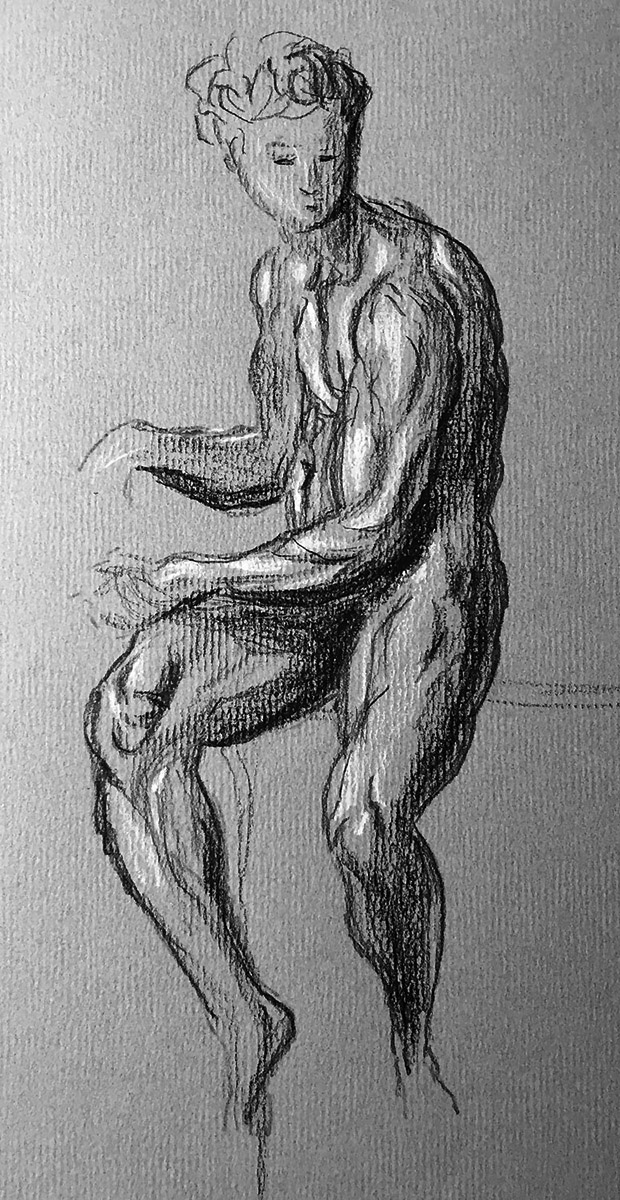
Here we have a Prismacolor® pencil drawing of a young man copied from a drawing of a young man drawn by Jacopo Tintoretto. Prismacolor® makes 150 different colors. I used only black and white. Why am I mentioning this? I really thought if I started writing I would be able to come up with something funny to say. As you can see, that did not happen. I realize the style of the drawing makes the young man look like a bag of walnuts but if you see the original, it kind of looks like that. It is in the collection of the governing body of Christ Church in Oxford, United Kingdom. I could not find an image of the drawing on their site. Since I am not part of the governing body, there isn’t a whole lot I can do. Here is a link to another Tintoretto drawing so you can see his style. I thought I would consult the World History Encyclopedia to find out about this exceptional artist.
These models were then placed inside a box.
The following information on Tintoretto was taken, borrowed, and perhaps stolen from the World History Encyclopedia. Tintoretto’s real name was Jacopo Robusti, and he was born in Venice in 1518. He began his career as an artist creating unassuming works such as decorated furniture and frescoes on exterior walls. It was, however, his large paintings that would make him famous. It has been said that his work combines the drawing style of Michelangelo along with Titian’s use of color. In his drawings and paintings, Tintoretto created muscular figures posed in unusual positions. Mannerism would be the name given to this technique. In the 17th century, the Mannerist style would become a major influence on artists. Tintoretto’s artistic style is also defined by his light source. He would create areas of shadow and color that are distinctive and dramatic. As part of the process of creating his work, the artist would first construct small wax models of human figures. These models were then placed inside a box. It was then possible to organize the models and use an artificial light source to illuminate them. As a result, different and unique effects of light and shadow would be created. Although today Tintoretto is considered a great Italian Master, throughout his career, he was criticized for his rapid pace and lack of finish in his art.
